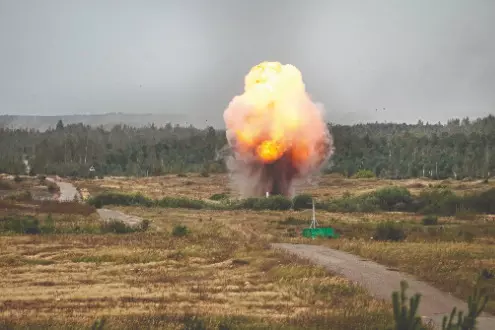Ukraine wants Western allies to invest in its defence industry

Kyiv: With little chance of NATO membership for Ukraine, the country’s Western allies have bought into an alternate strategy for helping it repel Russian aggression: invest billions in Ukraine’s weapons industry so it can better defend itself.
If the strategy works, Ukraine’s weapons industry will eventually be able to help equip US and European armies, too, with cutting-edge drones and other military technology being developed in the midst of its war with Russia.
One recent advance in Ukraine’s homegrown arsenal is a quadcopter drone that can evade Russian jamming devices, fly more than 20 kilometres and drop six kilograms (13 pounds) of guided explosives onto tanks and other high-value targets.
“The Ukrainians are the leaders in the world in terms of drone technology,” Keith Kellogg, the Trump administration’s special envoy for Ukraine said last week at a conference in Kyiv. “We are working with Ukrainians now to make sure we have got this drone technology exchange, which I think is very important.”
Europeans have been taking the threat from Russia more seriously since the second Trump administration began signalling that NATO members shouldn’t be overly reliant on the US to defend them. Anxieties across Europe were heightened last week after Russian drones launched from Belarus were shot down in Polish airspace.
For its part, Ukraine is seeking investment to triple its weapons production, become less reliant on Western partners to fight Russia – and hopefully deter future conflicts.
Ukraine’s weapons industry now meets nearly 60 per cent of its army’s needs, up from 10 per cent when Russia’s full-scale invasion began 3 1/2 years ago, according to its defence minister. But its military budget — USD 64 billion in 2024 — is less than half the size of Russia’s, which is why it turns to Western allies for weapons and, increasingly, money.
In addition to any private investment, and in lieu of NATO membership, security guarantees for Ukraine will likely centre on European governments investing in its army — essentially paying Kyiv to build its own weapons and plugging in production gaps with mutually beneficial joint ventures.
European countries are eager to do this, said Fabien Hinz of the International Institute for Strategic Studies in London. “Ukraine has the advantage of having battle-tested systems, of having quite low production costs and having entities in place capable of producing these systems rapidly.”
For both sides, the war has necessitated fast cycles of innovation as a matter of survival. How quickly a weapon can be developed, shipped to an army unit and improved upon is a matter of life and death.
Like most defense companies in Ukraine, the maker of the R-34 quadcopter drone — FRDM — communicates with soldiers at all hours of the day and quickly
incorporates feedback. Its founder, Vadym Yunyk, is guided by the motto: Robots should die in the front lines, not people.



